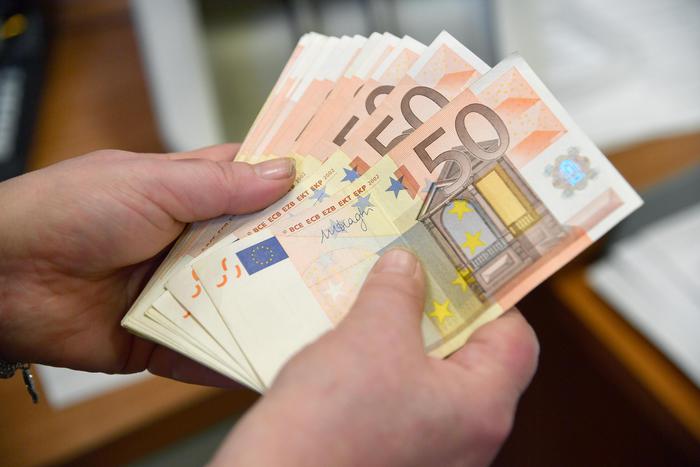Enlarge image
Euro notes: means of payment for a good 340 million people in 19 EU countries
Photo:
Jens Büttner / dpa
Despite European unification, comparatively few citizens of the Union identify with Europe.
The fact that the previous euro banknotes all show bridges, none of which existed when they came into circulation, could have played a role in the identification with the common currency in the EU.
Is there another fantasy solution so as not to step on a country's feet?
Or is something completely different coming in the future?
20 years after the introduction of euro cash, the European Central Bank (ECB) now wants to redesign the euro banknotes.
The central bank wants to "work with European citizens in a process that should lead to a final decision in 2024," announced the ECB.
President Christine Lagarde is quoted as saying: “After 20 years it is time to take a close look at the design of our banknotes and to design them in such a way that Europeans, regardless of age or background, can better identify with them. «
Second generation of the notes complete since 2019
A multi-stage process is planned: In the first step, ideas on possible topics for future euro banknotes are to be obtained from across the euro area.
Subsequently, experts from the countries should propose a selection of new topics to the Governing Council.
The ECB will then ask the public for their opinion on the selected issues.
A design competition for the new banknotes will then take place.
After the drafting process has been completed, the Governing Council will decide on the production of the new notes and their possible issuing dates.
If that is too time-consuming for you, you can send your proposal to the SPIEGEL business editor.
We'll view them at short notice - and want to publish a completely subjective selection of the submissions:
In 1999, the euro became legal tender for eleven of the then 15 member states of the EU, initially only electronically, and from January 1, 2002, then also in the form of notes and coins.
Today the euro is the official currency for around 340 million people in 19 EU countries.
The security features of the notes as protection against forgery have been revised and expanded in recent years.
The second generation of euro banknotes was completed in 2019.
The motifs on the banknotes were retained: buildings that do not actually exist also adorn the second generation of euro banknotes.
The basic colors of the notes have not changed either.
apr / dpa










